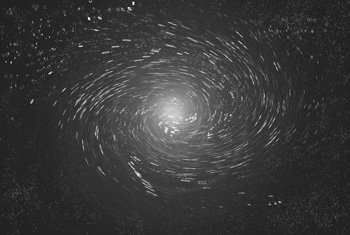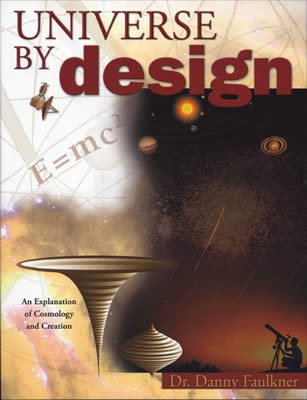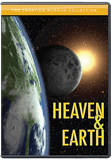
Chapter 7
Conclusions and Recommendations
The development of a creation model of astronomy has lagged development of creation models in biology and geology.
In an earlier work I reviewed the state of creation astronomy.1 There I pointed out that the development of a creation model of astronomy has lagged development of creation models in biology and geology. There are two reasons for this. One reason is that there are so few qualified researchers in the field. In order to contribute significantly to an endeavor such as this, one must have great knowledge of the subject, which today usually requires earning a doctorate. Creationists with doctorates in either astronomy, or physics with a specialty in astronomy are very rare. Many Christian young people with an aptitude in science are attracted to biology or geology where there is obvious disagreement with the Bible on the question of origins. However, many fail to understand the extent to which evolutionary thinking has permeated astronomy, as well as many other sciences. It is hoped that this book may kindle a keen interest and devotion in some Christian young people to pursue a career in astronomy to help develop creation-based models.

The second reason why so little progress has been made with a creation astronomy model is that we have fewer biblical specifics in astronomy as compared to biology and geology. Many of the issues dealing with biology and geology are post-creation week, while most astronomy issues may be creation week. Physics as now ordained to operate may have not been in effect at the time the astronomical world was created. The creation of the heavens is mentioned in Genesis 1:1, but it is unclear exactly what this means. The only other mention of astronomical bodies is on day 4 when the sun, moon, and stars were created. Does the creation of the heavens in Genesis 1:1 refer to the abode of God, or to space, or does it imply the creation of some material objects as well? Some would place the creation of distant astronomical objects at this time, but this would seem to contradict the very clear statement in Genesis 1:19 that those objects were created on day 4. Therefore, the creation of stars and galaxies in the very beginning (before the earth) is not biblically sound.
Alternately, the creation of the heavens on day 1 in Genesis 1:1 could refer to the initial creation of matter that on day 4 was shaped into stars and other objects. If all matter was created on day 1, then this raises the question of what form that matter was in. Was this matter merely amorphous, or did it have some shape? Was the matter “normal” matter, as we know it, such as atoms made of electrons, protons, and neutrons, or was it in some exotic form? All answers to these questions are speculative, as we have no firm biblical guidance on these issues. This situation does allow us some latitude in developing ideas. For example, in his model discussed in the previous chapter, Russ Humphreys assumes that the matter was normal atomic matter, primarily in the form of hydrogen and oxygen to form water. The speculation of water comes from the mention of water in Genesis 1:3 and water being placed above the expanse in Genesis 1:6–7.
With such scanty information, creationists generally have postulated that God created the astronomical world, probably entirely on the fourth day. This has been the extent of creation cosmology. This is contrasted with creation biology and geology. Creation biologists discuss baraminology, the study of created kinds, and question whether speciation within kinds has occurred since the Flood. Flood geologists offer evidence of catastrophic mechanisms that operated during and immediately after the Flood, and they use the Flood and its aftermath to explain the geologic column and the many varied landforms on the earth today. There are several competing theories of how the Flood commenced and laid down rock strata.

Image courtesy of Corbis Stock Photography
Creation of the Animals by Jacopo Tintoretto
In short, creationists believe that events have shaped the earth and the life
on it. Even the creation week may have contained some processes (albeit very
rapid ones!) rather than instantaneous creation, though instantaneous creation
may have been the norm. For instance, man was created from the dust of the earth,
which suggested a shaping process. The fashioning of Eve from the side of Adam
also suggests a process. The terminology of Genesis 1:11, 20, and 24 suggests that plants and animals may not have been created ex
nihilo, but may have been created in a rapid process using matter that already
existed. Each of these three verses says “let the earth
(or water) bring forth… .
” These words suggest the possibility of a process,
however there are severe limits on any processes involved. The most severe limit
would be that all creative processes would have required less than a day, so
these were not evolutionary processes.
Most creationists assume that bodies in the astronomical realm were instantaneously created on day 4, but is this necessarily true? Could these bodies have been shaped rapidly? Perhaps all the matter of the universe was created on day 1, but most of it remained shapeless until day 4, much as the earth was shapeless at first (Genesis 1:2). If this is true, then astronomical bodies may have been formed on the fourth day through a rapid, directed process. Again, because of its quick and ordered nature, this was not an evolutionary process. This suggestion catches the essence of the Humphreys cosmology. Matter was created in the beginning, but it was not until day 4 that stars and other astronomical bodies were formed. Perhaps the planets formed on the fourth day from matter created three days earlier. One possibility is that the many of the craters found on nearly every hard surface in the solar system were the result of the assembly of these bodies on day 4.2
What of the universe as a whole? The Humphreys cosmology is the only example of a serious attempt to explain how the universe came to be from a biblical framework. There may be other possibilities, but few people have spent enough time to develop them. It is desirable that we have a selection of cosmological models like we do with Flood geology.
In the Bible (Genesis chapter 1) the Hebrew word that is usually translated “heaven” is shemayim. A related word is the Hebrew word raqia, which was discussed in an earlier chapter. There it was pointed out that this was badly translated as “firmament” in the AV. Firmament gives the meaning of being hard, and was actually introduced in the LXX as an accommodation of ancient Greek cosmology. The word raqia is a noun that comes from a verb meaning “to beat out” as one might do to a metal. Gold is so malleable that gold working is a good example of this process. Hammers or rollers may be used to pound gold into a thin leaf that is only a few atoms thick. Gold leaf can be applied as a coating to surfaces in a process called gilding. Therefore, the raqia is something that is beaten out.
Obviously, the raqia must have some property of something that has been beaten out, but just what is that property? Some people who support the rendering “firmament” argue that the thing being beaten out is usually a metal, and since hardness is a common metallic property, the raqia must be something hard. However, there are other metallic properties, such as luster and electrical and thermal conductivity. Why should we restrict the meaning to hardness? Furthermore, gold is one of the best examples of a metal that is beaten out, but gold is not known for hardness. Perhaps the important property is not anything inherent in the thing beaten out but rather is a result of the process itself. When something is beaten out, it is stretched, so the raqia could be something that is stretched. This is especially interesting in that the Old Testament has numerous statements of the heavens being stretched out, as in Psalm 104:2. In fact, just these passages provided some inspiration to Russ Humphreys for his model. If we understand the stretching of the heavens to mean the expansion of the universe, either past or present, then the Christian should welcome redshifts, not oppose them.
Many modern translations of the Bible follow this lead in rendering raqia as “expanse.” In Genesis 1:14 the stars are said to be in the raqia of the shamayim, and in Genesis 1:20 birds are described as flying in the raqia of the shamayim. Thus a good alternate meaning may be the sky. In English we say that both birds and stars are in the sky. In other passages the heavens (shamayim) and the expanse (raqia) are equated. For instance, Genesis 1:8 explicitly states that God called the “raqia” shamayim. Therefore, the shamayim and the raqia may be used interchangeably. If this is correct, then there may be no basis for always making a distinction between the two—the two may be used as variety to mean the same thing or may refer to different aspects of the same thing. In any case, it is very clear that the raqia is not something hard.
Some people think that the creation of the raqia refers to the creation of space itself. If this is true, then what are we to make of the statement in Genesis 1:1 that God created the heavens (shamayim) at the very beginning? Others think that that the creation of the raqia on the fourth day refers to the creation of the earth’s atmosphere. If this is true, then what are the waters above the raqia? Proponents of the canopy theory (that there was a large volume of water above the earth’s atmosphere before the Flood) think that the raqia is the earth’s atmosphere and that the water above was the canopy that was collapsed at the time of the Flood. Others think that this water refers to atmospheric water in the form of vapor and clouds. Still others think that there is a large amount of water beyond the space that we see in the universe. At least a few creationists think that the raqia is the creation of the crust of the earth or the earth’s surface. This interpretation is difficult to square with some of the other considerations just discussed. We have no definite answers on just what is meant by these passages, and so some latitude in speculation on this is allowed. However, the best interpretation is that space itself was created in the first verse with the creation of the heavens.
One of the most serious shortcomings of creation astronomy is that there is no creation model of stellar astronomy. Again, most creationists conclude that stars were created on day four and have not changed since then. However, we assume that the earth changed dramatically during the Flood. We also believe that there may have been post-flood speciation and that many kinds of plants and animals have become extinct since the creation. Very little has been written on applying these sorts of principles to astronomy, so let us consider a few points here.

Image courtesy of NASA
Our sun
Most astronomers think that over long periods of time, stars gradually change. This is based upon the conclusion that stars derive their energy from thermonuclear reactions, most notably the fusion of hydrogen into helium. Recent studies of solar neutrinos seem to confirm that at the very least the sun does this. Thermonuclear reactions generally happen in the cores of stars, where the pressure and temperature are high enough to support these reactions. Thermonuclear energy is so efficient that stars could be powered over very long periods of time. For instance, calculation shows that the sun can be powered by this mechanism for about 10 billion years. Through fusion, the composition of the core of the sun and other stars should slowly change from being mostly hydrogen to being almost entirely helium. This change in composition will increase the mean molecular weight of the core. Anyone familiar with the ideal gas law will realize that as the mean molecular weight increases, there will be a change in the temperature and volume of the core. More specifically, the core will shrink and become hotter. The increase in the temperature and density will cause the thermonuclear reactions to increase. An increased thermonuclear reaction will cause the star to become brighter.
If a star changes its observable properties such as it brightness, astronomers say that the star has evolved. In other words, change is equated with evolution. Biologists try to get away with this sort of sleight of hand when discussing biological evolution. They define evolution as change, so if any change in the gene pool of a species can be demonstrated, then evolution can be demonstrated. Of course, most people recognize that biological evolution, if it were possible, is more than simple change. Biological evolution must include increased information and the development of new kinds of organisms. Astronomers do not claim that of either of these things happen with stars: stars may change their properties, but no new information is generated and no new kinds of objects are created. This would seem to mean that stellar evolution and biological evolution are fundamentally different.
Another difference between stellar evolution and biological evolution is that the former is based upon well-established physical principles. Biological evolution would have to operate contrary to much of the same physics, such as the second law of thermodynamics. If stars derive their energy from thermonuclear reactions and if there has been sufficient time, then physics demands that stars must change their overall properties. That is, stars must evolve, given the definition of stellar evolution.

Image courtesy of Bryan Miller
This illustration demonstrates the process of stellar aging.
Many creationists are naturally taken aback by the possibility that stars can change, particularly when the word evolution is involved. Instead of saying that stars evolve, may I suggest the word “entrope”? This word is derived from the word entropy, for any changes in stars are subject to the second law of thermodynamics, and this word better reflects this fact than the word evolve does. Others have suggested the use of the alternate term “stellar aging,” which gets across a similar idea.
The only impediment to observing stellar entroping is a lack of time. It takes a very long time for a star like the sun to undergo a significant change in its structure that can be seen. Indeed, if the universe is only a few thousand years old as the creation model suggests, then there has not been nearly enough time for most stars to have appreciably changed (or evolved, or entroped) from the state in which they were created. On the other hand, if the sun and earth were billions of years old, the gradual change in the sun demanded by stellar evolution theory is a problem.3
Through much of our discussion, we have assumed that the sun is a star. Developments in astronomy over the last few centuries have led us to this conclusion. However, is this true in a biblical sense? The Hebrew word for star refers to any bright, star-like object in the sky. Besides the stars, this term would include the planets, comets, and meteors. In short, virtually every astronomical body except the sun and the moon would be considered stars in ancient Hebrew. Even orbiting spacecraft visible to the eye and modern aircraft, especially at night, would fit the biblical definition of stars. In a biblical sense, the sun may not be a star. If this is true, then perhaps the sun is different from stars in some fundamental way(s). One possible avenue for creation research is to ascertain ways, if any, that the sun is different from stars. In passing, I should mention that some Christians note that stars are sometimes used in the Bible to represent angels, or messengers, and so conclude that distant stars are angelic beings. While interesting, this is poor theology and ultimately could lead to very strange beliefs. Nearly all, if not all, commentators agree that such usage is symbolic.
Many creationists believe that a major part of the curse as the result of man’s sin in the Garden of Eden was the imposition of the second law of thermodynamics. The first law of thermodynamics insures that energy (and matter) cannot be created or destroyed, but the second law of thermodynamics is a statement of how less useful energy becomes as it is used. A quantity called entropy is the measure of how less useful energy is. The second law requires that entropy increase with time. Entropy has been generalized to not only refer to energy, but also to order and information, and to decay. Much of the case for the law of entropy being part of the curse is from Romans 8:22 and the context therein.
However, could this be reading too much into the curse? Digestion of food is an excellent example of the second law of thermodynamics. Food containing lower entropy is consumed to produce higher entropy waste, all the while producing energy and nutrients for the person eating. Did Adam and Eve eat before the fall? Certainly, given the instructions of what they could and could not eat and the fact that they sinned while eating. The second law of thermodynamics dictates the direction that energy flows (from hotter to colder). If the second law of thermodynamics did not work, then how could the sun and stars have shone before the fall? There are numerous other examples. This demonstrates that the second law of thermodynamics had to be in operation before the fall of mankind. If one wants to persist in arguing that the second law of thermodynamics came into force at the time of the fall, then one must hypothesize that some other law describing energy transfer was placed before the fall that the law of entropy supplanted at the time of the fall. While this is a logical possibility (one that I would not necessarily oppose), such a suggestion is hardly science, for it is not testable.
I bring this question up to ask just what effect did the fall of man have upon the cosmos? Romans 8:22 strongly indicates that the entire cosmos somehow shared in the curse. Any creation cosmological model should consider this and other questions raised here. At the time of this writing these questions have hardly been raised, let alone answered. It is my sincere hope and prayer that this modest book may help stimulate work on this important topic.
One thing that we have learned from our study of cosmology is that it is a rapidly changing thing. Over the years many ideas have seemingly been beyond dispute only later to be discarded. An understanding of Genesis that was tied to any of these ideas would have been discredited long ago. Are we so arrogant to think that only our generation has finally learned the ultimate nature of the universe? Those who would link Genesis to the big bang should carefully consider the caution offered here. When the big-bang theory is scrapped, what is to become of Genesis if we have wrapped it in the big-bang theory? Science is a tentative, changing enterprise, but the Bible is forever true.
Checking Your Understanding
- Why has there been so little progress in developing a creation model of astronomy?
- How might the Hebrew word, raqia, translated “firmament” in the AV relate to the modern idea of the expansion of the universe?
- What is a star, as used in the biblical sense?
- What does Romans 8:22 suggest about the universe and the curse of sin?
- What is the danger of incorporating the big bang as the basis for understanding the Genesis account of creation?
Universe by Design
This book explores the universe, explaining its origins and discussing the historical development of cosmology from a creationist viewpoint.
Read Online Buy BookFootnotes
- R.E. Walsh, editor, “The Current State of Creation Astronomy” by D.R. Faulkner, The Fourth International Conference on Creationism (1998) p. 201–216.
- D.R. Faulkner, “A Biblically Based Cratering Theory,” Creation Ex Nihilo.
- D.R. Faulkner, Impact 300.
Recommended Resources

Answers in Genesis is an apologetics ministry, dedicated to helping Christians defend their faith and proclaim the good news of Jesus Christ.
- Customer Service 800.778.3390
- Available Monday–Friday | 9 AM–5 PM ET
- © 2025 Answers in Genesis




